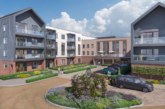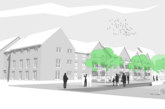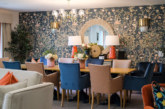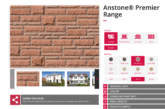 Rob Grewcock, Associate Architect at multi-disciplinary design practice, rg+p discusses the changing dynamic within the UK’s retirement housing market, including how this affects design and the potential that could be unlocked for developers.
Rob Grewcock, Associate Architect at multi-disciplinary design practice, rg+p discusses the changing dynamic within the UK’s retirement housing market, including how this affects design and the potential that could be unlocked for developers.
The UK’s retirement housing market is currently in a state of growth and transition, influenced by a population that is living longer and the subsequent need to provide more sustainable, long-term solutions. The wealth tied up in the current generation of retirees is becoming increasingly influential and the opportunity to develop schemes that respond to the specific requirements of the sector presents a new challenge for the industry to embrace.
Today’s later living schemes increasingly feature high quality amenity space, both internally and externally, with specifications to rival those of the high-end, bespoke residential schemes. Growth in this sector has also seen a renewed focus on community, with connections to enhanced facilities and safety/security highly valued. For instance many of our schemes now incorporate communal facilities such as gyms, restaurants, hairdressers, cinema rooms; people are buying into a lifestyle, not just an individual property.
Furthermore, whilst the archetypal model of say 30-60 retirement apartments contained within a single block is still popular, we’re finding that developers are looking at ways to diversify. Specialist retirement housebuilders are now considering larger parcels of land in a wider variety of locations, with different tenures and with varying levels of care.
Wider age bracket
From a design perspective, this means we’re catering for a wider age bracket and ensuring that when needs change, residents can be safe in the knowledge they’ll be supported. Some of our current schemes include bungalows (specifically marketed to the over 55s), sitting alongside retirement or assisted living apartments. The resultant age and care profile across a site helps to build a community and offers broader facilities than would typically be available if built separately.
Moreover, by combining different house types we’ve found that land options increase and developers are able to bid on larger sites which can open doors to creating bigger communities. The precedent set by the more mature retirement markets of Australia, New Zealand and America, where circa. 5% of those over 65 reside in retirement schemes – compared to just 0.5% of those in this bracket in the UK – shows there is large potential for future growth and scale of projects.
Looking ahead, it’s not unrealistic to expect further changes in this market. As properties and retirement villages are reimagined to adapt to the needs of an aging population, becoming higher and higher specified with smart technology for example, they represent a sound investment. The need to outsource property management is eliminated and we’re seeing a shift towards more sustainable, long-term solutions which enable developers to legitimately consider different propositions and wider portfolios as well as create safe and secure environments for older people.
Like our Facebook page for all the latest industry updates.









